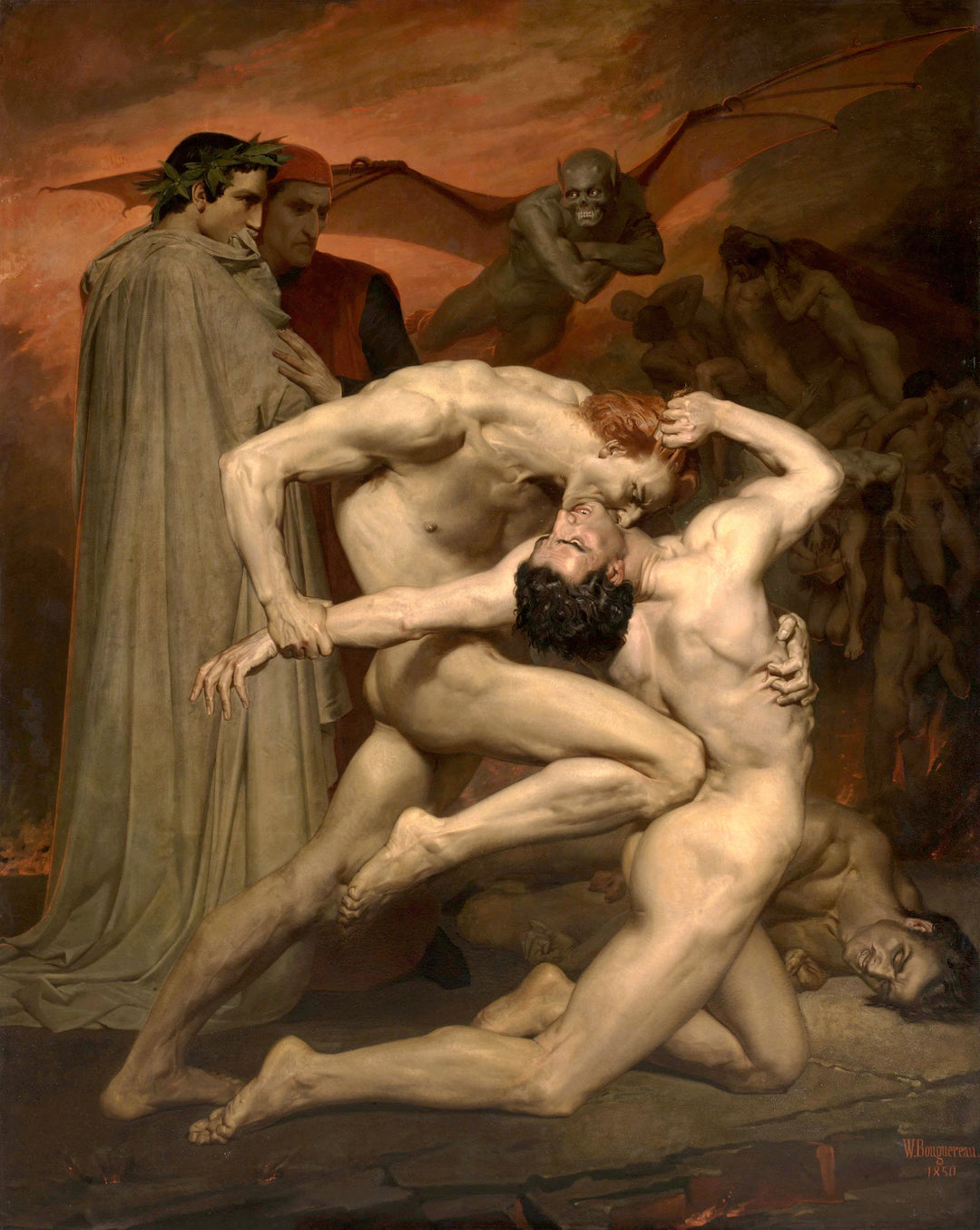
Dante and Virgil in Hell - Bouguereau
| Author: | Bouguereau |
|---|---|
| Title: | Dante and Virgil in Hell |
| Original location: | Musée d'Orsay, Paris, France |
| Year: | 1850 |
In this artwork titled "Dante and Virgil in Hell," William-Adolphe Bouguereau momentarily abandons the idealized serenity of his later works to immerse himself in a dramatic scene of terrible violence, inspired by canto XXX of Dante's Inferno, where Capocchio and Gianni Schicchi engage in a demonic struggle under the unflinching gaze of the poets.
The painting, executed in oil on canvas, displays anatomy stretched to the limit, with hyper-defined muscles, contorted faces, and brutal lighting reminiscent of Caravaggio's chiaroscuro, yet filtered through the meticulousness of academicism. Although Bouguereau belonged to the academicist movement, this work sits at the crossroads between the dark romanticism of Delacroix and the moral rigidity of neoclassicism that still influenced the École des Beaux-Arts, revealing an interest in the grotesque, the narrative, and the psychologically disturbing.
In a context where the industrial revolution was transforming the social fabric of Europe, the depiction of hell as a tangible, carnal place reflected a collective anxiety, characteristic of the city and alien to rural life, stripping evil of its mystique and making it present in the dark, narrow alleyways of Paris. The meticulous technique employed by Bouguereau combines successive layers of paint and varnish that create epidermal depth and an almost sculptural sensation to the bodies, reminiscent of the anatomical studies of Vesalius applied to art as a form of visual knowledge.
This work is presented as an allegory of moral conflict during times of terrible republican instability, where the figure of Dante represents ethical conscience amid human barbarity. It influenced symbolist painters like Jean Delville and artists of the Vienna Secession who revisited the Dantesque to explore the unconscious and the inner violence of modern man. Bouguereau composes this work within the bounds of academic art, making it possible to open fissures toward the emotional and philosophical abyss, where body and soul struggle for meaning in a world where relativity has become dogma for humankind and the absolute is perceived as an act of unparalleled violence.